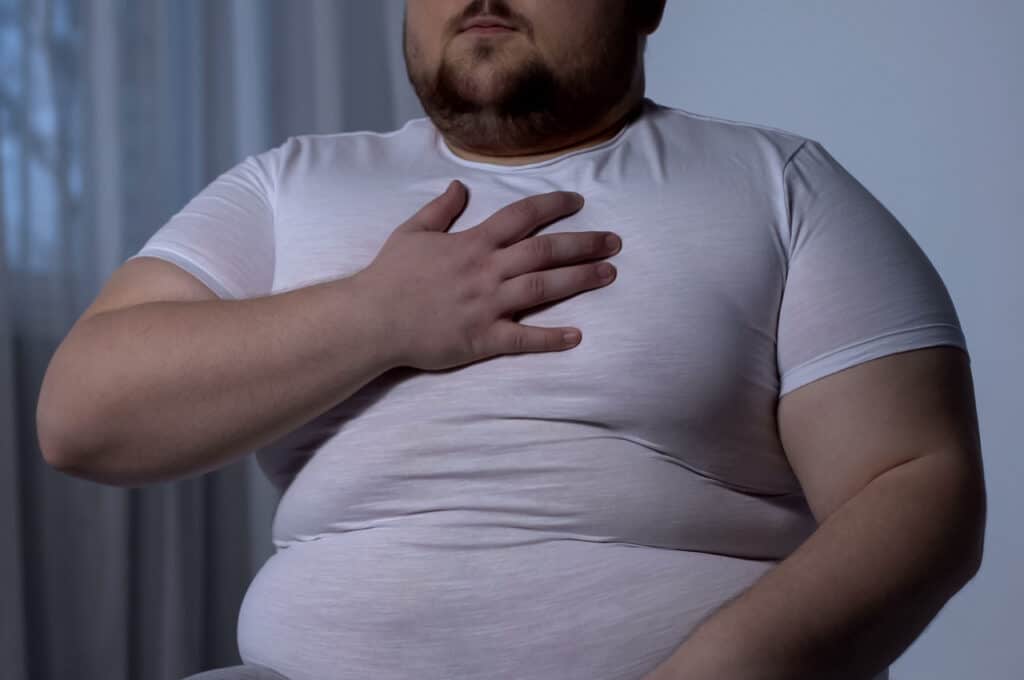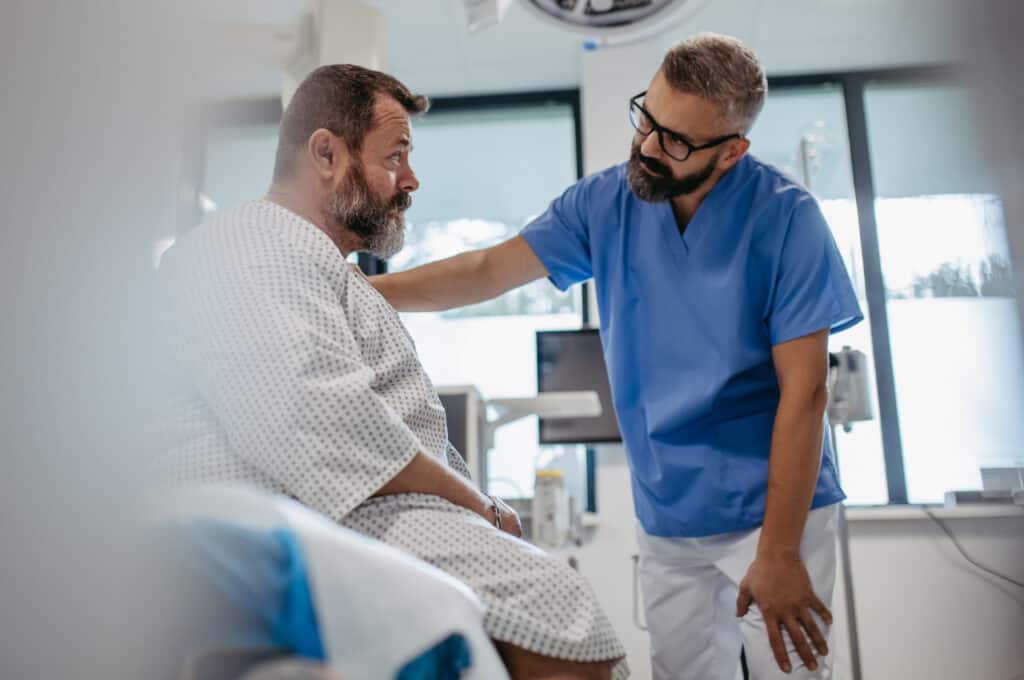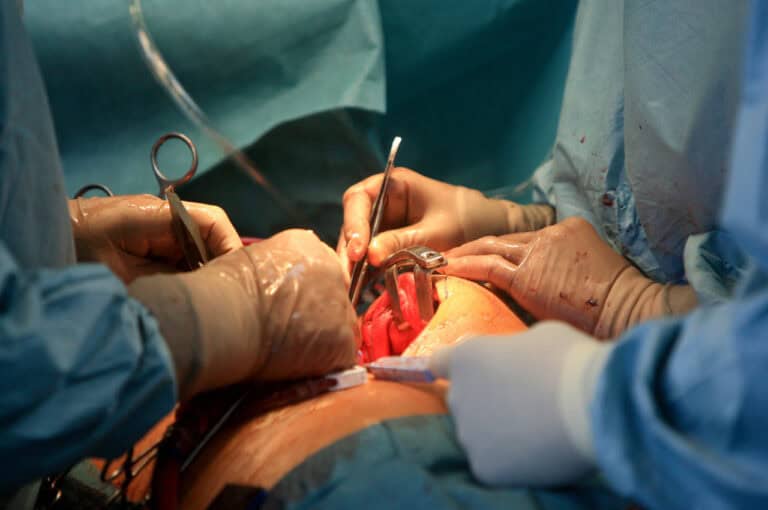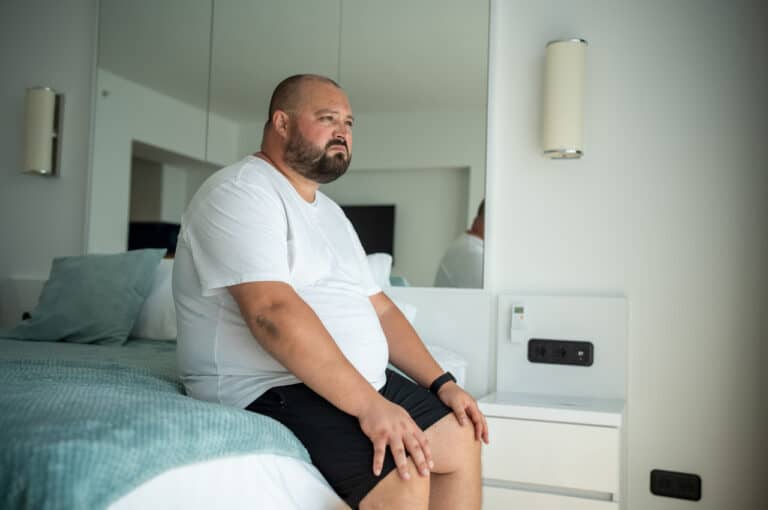If you have noticed changes in your chest and are wondering if it might be more than just weight gain, you are not alone. Many men struggle to figure out whether they are dealing with excess fat or true gynecomastia.
Knowing what gynecomastia feels like and recognizing the key signs early on can make a big difference in getting the right treatment.
At the Gynecomastia Center of Boston, we help patients every day who have questions about the condition. Understanding the typical symptoms and how they differ from regular fat can help you take the next step toward a solution.
What Gynecomastia Feels Like
One of the main ways to distinguish gynecomastia from simple fat buildup is the feel of the tissue.
Gynecomastia usually presents with a firm or rubbery mass under the nipple and areola. This tissue feels noticeably different from soft chest fat and is often more localized right beneath the nipple area.
The key sensations many men report include:
- Firmness: Unlike soft, spread-out fat, gynecomastia tissue feels more solid and structured.
- Rubbery texture: The mass may feel elastic or rubbery to the touch, especially when pressing lightly.
- Tenderness: Some patients experience soreness or sensitivity, particularly in the early stages.
- Swelling: The chest area might look slightly puffy or swollen even if body weight has not changed.
It is common for men to feel this mass during daily activities, such as when showering or lying down. If you notice these sensations consistently, it is a strong sign that you may be dealing with gynecomastia rather than simple fat accumulation.

Early Symptoms to Watch For
Recognizing early signs can help you identify gynecomastia before it progresses. Not every case involves significant breast enlargement at first.
Here are a few early indicators to pay attention to:
Sensitivity or Pain
Mild pain, aching, or nipple sensitivity can occur, especially during hormonal changes like puberty or with certain medications. This discomfort often prompts men to first notice something unusual about their chest.
Changes in Nipple Appearance
As glandular tissue grows, the nipple and areola may appear puffier than usual. The shape can change subtly at first, then become more noticeable over time.
Unilateral or Asymmetrical Growth
While gynecomastia can affect both sides of the chest, it is not always symmetrical. Some men notice more growth on one side, which can make the chest appear uneven.
These symptoms often start gradually and become more noticeable if left untreated.
How Gynecomastia Progresses Over Time
Gynecomastia does not always stay the same. Without intervention, it can continue to develop and lead to more significant changes.
Here is how the progression typically looks:
Initial Stage
Soft, tender glandular tissue starts to form under the nipple. It may be sensitive but not very large yet. Some swelling or puffiness is often the first visual sign.
Intermediate Stage
The glandular tissue grows larger and firmer. Tenderness may decrease, but the chest starts to take on a more rounded, breast-like shape. Skin around the area may stretch slightly as tissue builds.
Chronic Stage
Over time, the gland can become more fibrotic, meaning the tissue hardens and loses elasticity. At this stage, the condition becomes more permanent, and surgical treatment is usually required to correct it.
Recognizing the condition early allows for more treatment options and typically results in better outcomes.
Gynecomastia vs. Chest Fat: Key Differences
It can be difficult to tell the difference between gynecomastia and regular fat buildup, especially in cases of weight gain or obesity. However, there are important differences.
- Location: Gynecomastia centers around the nipple and areola. Fat is more diffuse across the entire chest.
- Texture: Gynecomastia feels firm and rubbery. Fat feels soft and squishy.
- Response to Weight Loss: Fat generally reduces with dieting and exercise. Glandular tissue from gynecomastia does not go away with weight loss.
- Sensitivity: Gynecomastia often causes tenderness, while fat buildup does not typically cause any discomfort.
If you are losing weight but notice that the chest contour is not improving, it may be a sign that true gynecomastia is present.
Causes of Gynecomastia
Understanding what triggers gynecomastia can help explain why it develops in the first place.
Common causes include:
Hormonal Imbalance
An imbalance between estrogen and testosterone levels is the most frequent cause. When estrogen levels are relatively high, glandular tissue can start to grow.
Medications
Certain medications, such as anti-androgens, anabolic steroids, antidepressants, and heart medications, can cause gynecomastia as a side effect.
Health Conditions
Some medical conditions, such as liver disease, kidney disease, and thyroid disorders, can lead to hormonal shifts that trigger breast tissue growth.
Natural Life Stages
Gynecomastia often appears during puberty, when hormone levels fluctuate dramatically. It can also occur later in life as testosterone naturally declines with age.
Identifying the underlying cause can help guide treatment decisions and prevent recurrence.
What to Do If You Suspect You Have Gynecomastia
If you notice the signs and sensations of gynecomastia, the best first step is to seek a professional evaluation.
At the Gynecomastia Center of Boston, we perform a thorough examination to confirm the diagnosis and discuss treatment options tailored to your needs.
Depending on the severity and how long the condition has been present, your options may include:
- Observation if the condition is very new and mild
- Surgical removal of glandular tissue and fat for permanent correction
- Evaluation of underlying hormonal issues if suspected
Early evaluation helps avoid unnecessary frustration and ensures you get on the right path quickly.

Moving Toward the Right Solution
Gynecomastia is more common than many men realize, and it is not something you have to live with or hide. Recognizing what it feels like and identifying early signs can help you take control of your health and appearance sooner rather than later.
At the Gynecomastia Center of Boston, we are here to answer your questions, provide a clear diagnosis, and help you move forward with confidence. Scheduling a consultation is the first step toward feeling better about your body and your future.






